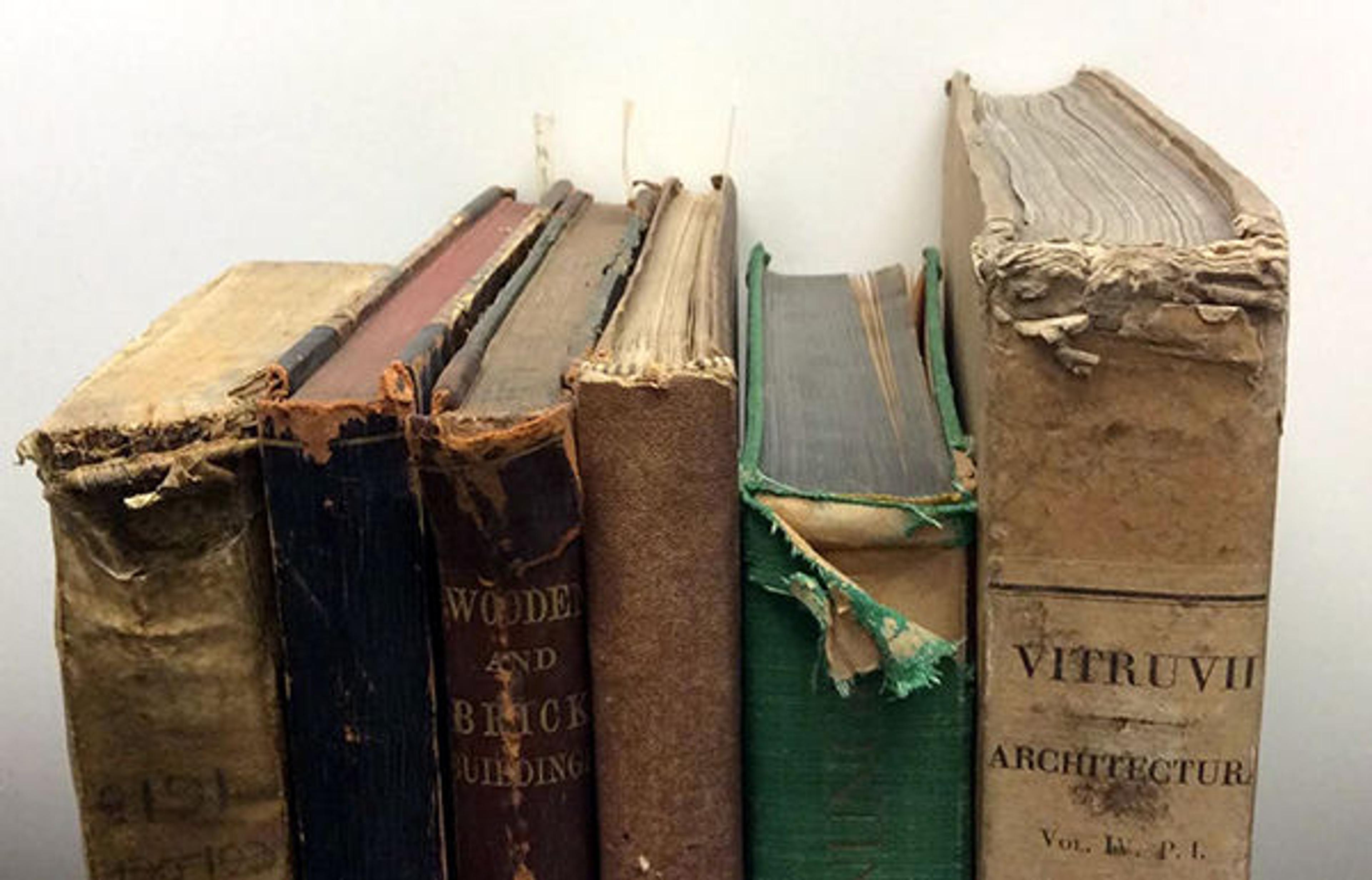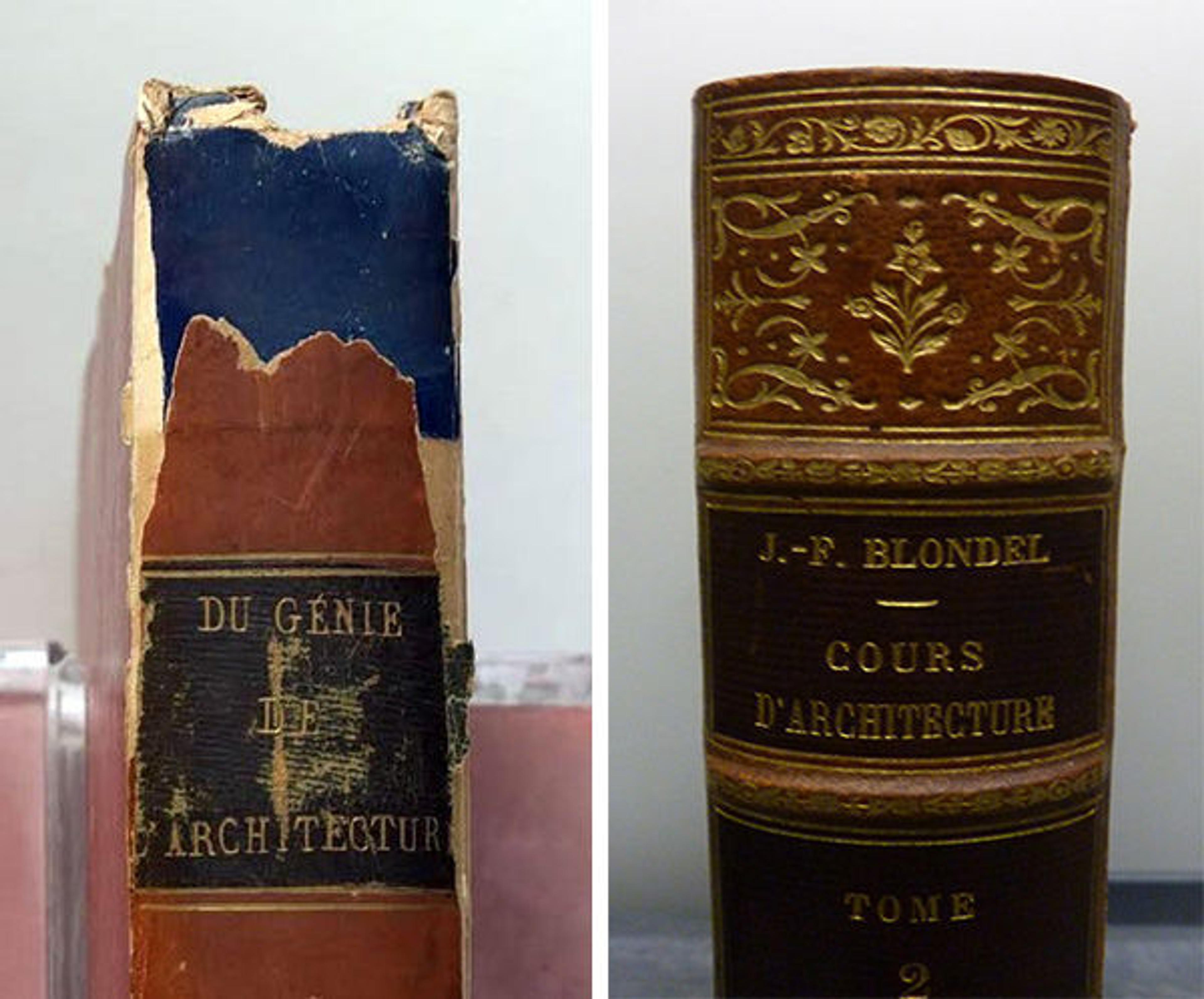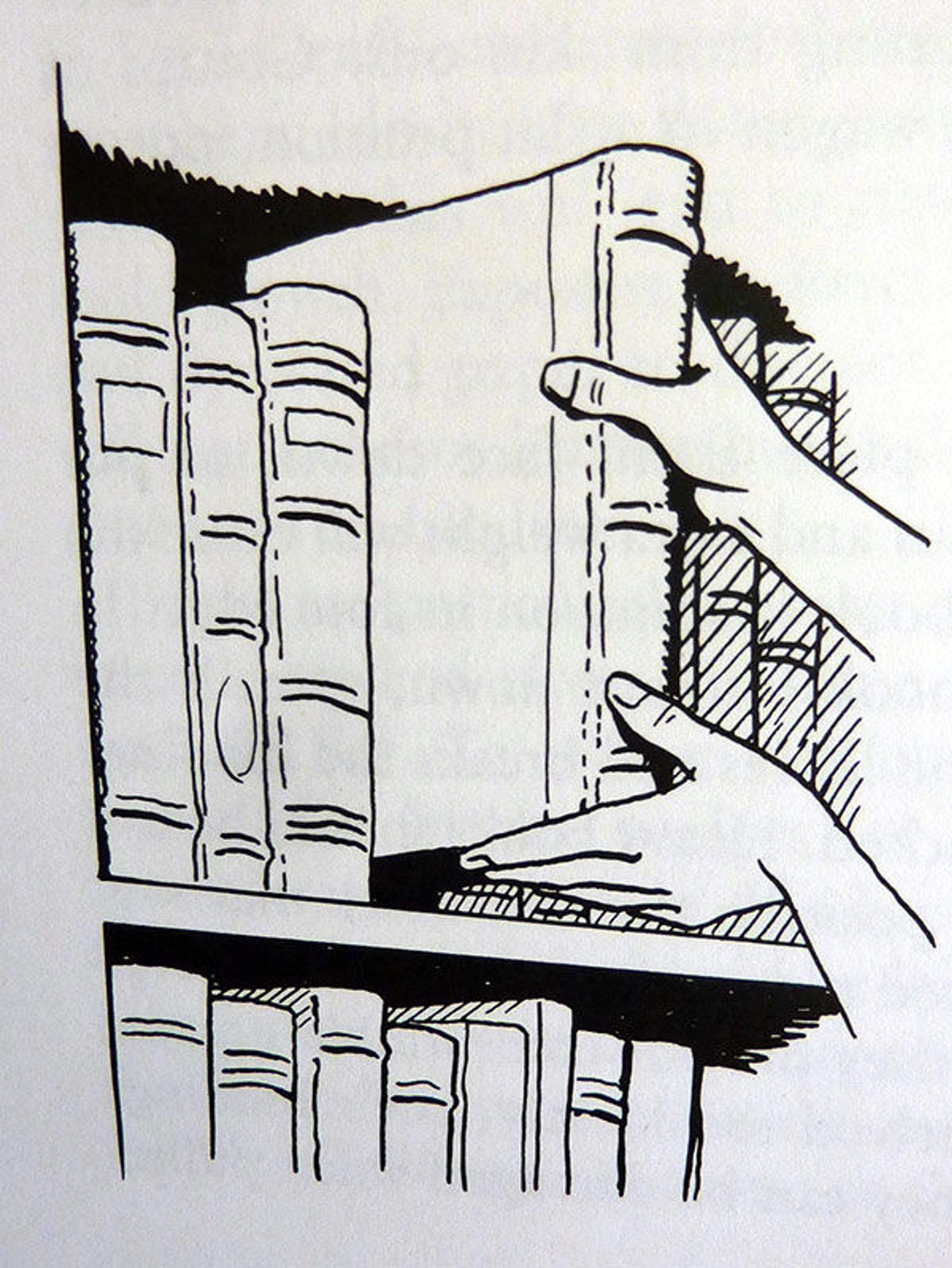
Here is a selection of bindings of various materials awaiting treatment that could have easily been prevented.
«In early March, we began a project to conserve and rehouse 160 books from the Department of Drawings and Prints. The project, French Architectural Books: Renaissance to Art Deco, was made possible by the New York State Program for Conservation and Preservation of Library Research Materials. From the beginning of the project, it was apparent that many books, regardless of their size, materials, or age, had damaged or missing headcaps—an indication that prior to coming into the Museum's collection, the books were likely shelved too tightly and then improperly pulled from the shelf by their headcaps. Books are easily damaged in this manner, so here is some basic information to help you avoid such damage in your library, be it institutional or personal.»
A headcap is the fold of binding material found at the top of the spine. While it may look strong, it is one of the most vulnerable parts of the book. During the bookbinding process, headcaps are created by turning the binding material onto itself. In a leather binding, a double layer of pared, thin leather rests on the spine and protects the embroidered or stuck-on endband.

Left: Leather headcap, frontal view. Right: Leather headcap with an endband
The pared leather becomes dry and brittle as it ages, and this factor contributes to the fragility of the headcaps. It is important to understand that headcaps are fragile, regardless of the bookbinding material used, whether it is leather, vellum, textile, or paper. Once damaged books become more vulnerable, tears can easily become worse with use. The full conservation treatment of a damaged book is usually a lengthy and expensive process, and no matter how skillfully a book is repaired, damages are irreversible and the book will never again be in its original state. In addition, as a result of the high cost of conservation treatments, not all owners can afford to have books repaired.

Left: Damaged paper headcap. Right: Intact leather headcap
Taking a book off a shelf that is tightly packed can be challenging. The vertical shelving of books, which contributes to the urge to pull books by their headcaps, is roughly five centuries old. While it is not likely that we can utilize the pre-1500s shelving tradition of shelving books horizontally with the foredge facing out, we can certainly learn a safe way to take the books off the shelf and thereby minimize the possibility of damage.
The risk of damaging headcaps can be greatly minimized by following these fairly simple procedures:
- Do not shelve books so tightly that they cannot be easily moved.
- Stay focused at all times while handling books.
- Have a table or cart prepared where you can place your book once it is off the shelf and have both hands free.
- When removing the book from the shelf, gently push books inward on either side to allow for a firm grasp on the spine in the center of the book.
- With your other hand, support the book at the bottom to prevent the book from dropping once it is off the shelf. Large size, landscape, and irregularly shaped books are easily dropped.
- Be aware that the condition of the book could be deceiving. The book may look like it has a strong binding, but it may have weak joints or loose pages, or may have loose boards or be detached from the textblock.
- Readjust books on the shelf in order to keep them upright, to minimize damage to joints and spines.

A safe way of removing the book from the shelf, from the Met publication The Care and Handling of Art Objects by Marjorie Shelley
By carefully handling books we can prevent permanent damage and unnecessary time loss and expense. Consult the Book Conservation Lab's Book Handling Guidelines for Watson Library Staff and Patrons for the instructions on safe handling of books and helpful ways be proactive in book preservation!